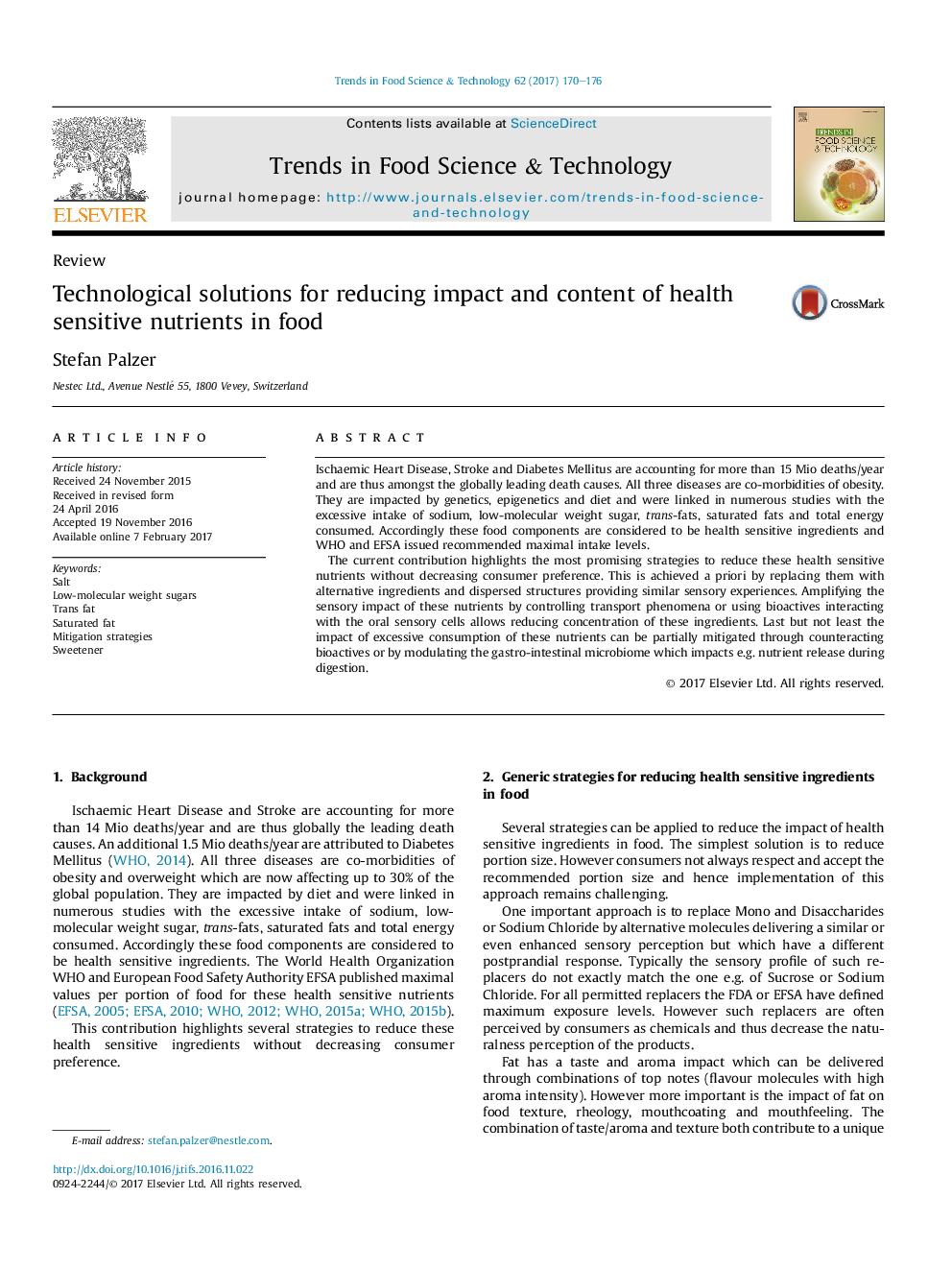| Article ID | Journal | Published Year | Pages | File Type |
|---|---|---|---|---|
| 5523655 | Trends in Food Science & Technology | 2017 | 7 Pages |
â¢Salt, low-molecular weight sugars, trans fats and saturated fats are health sensitive nutrientsâ¢Health sensitive ingredients can be replaced by alternative molecules or micro-structuresâ¢Salt and sugar content can be reduced by increasing sensorial impact through enhanced interaction with sensory cellsâ¢Plasma concentration can be reduced by modulating release from food bolus and absorption in GI systemâ¢The impact of health sensitive ingredients can be mitigated by modulating the metabolic activity
Ischaemic Heart Disease, Stroke and Diabetes Mellitus are accounting for more than 15 Mio deaths/year and are thus amongst the globally leading death causes. All three diseases are co-morbidities of obesity. They are impacted by genetics, epigenetics and diet and were linked in numerous studies with the excessive intake of sodium, low-molecular weight sugar, trans-fats, saturated fats and total energy consumed. Accordingly these food components are considered to be health sensitive ingredients and WHO and EFSA issued recommended maximal intake levels.The current contribution highlights the most promising strategies to reduce these health sensitive nutrients without decreasing consumer preference. This is achieved a priori by replacing them with alternative ingredients and dispersed structures providing similar sensory experiences. Amplifying the sensory impact of these nutrients by controlling transport phenomena or using bioactives interacting with the oral sensory cells allows reducing concentration of these ingredients. Last but not least the impact of excessive consumption of these nutrients can be partially mitigated through counteracting bioactives or by modulating the gastro-intestinal microbiome which impacts e.g. nutrient release during digestion.
